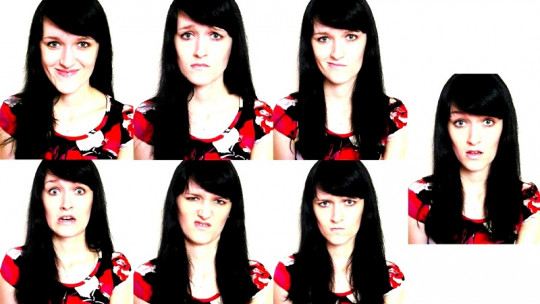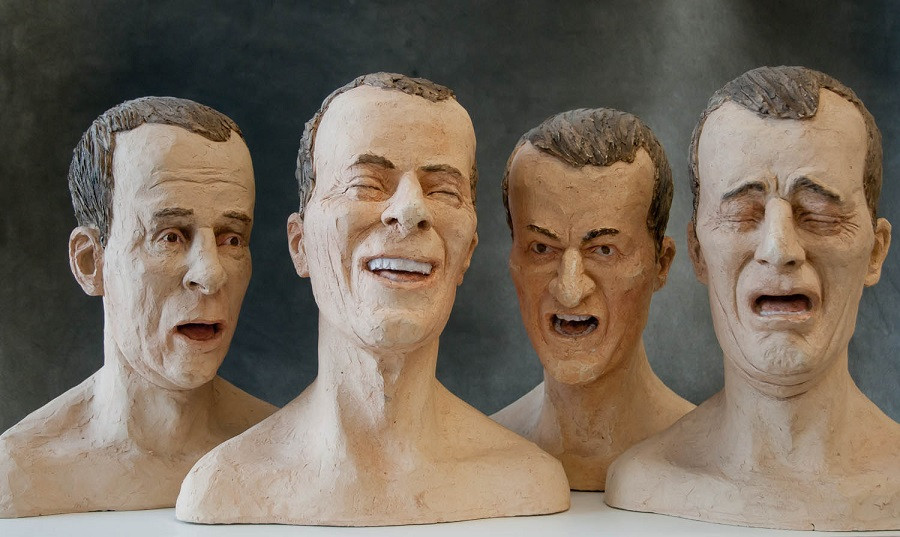
The human being is emotional nature and mood is often reflected unmistakably in facial expressions.
The four basic emotions (and not six)
There is a popular belief, maintained for years, and which was first proposed by the American psychologist Paul Ekman says that there are a total of six basic emotions or main ones that are known worldwide and that are easily decipherable through certain facial expressions, independent of the culture or condition of the person. These emotions, according to Ekman, were: sadness the happiness he fear the gonna the surprise and the disgust
However, it seems that Ekman erred in including any of them. A recent study published in Current Biology and carried out by researchers from Glasgow University, in the United Kingdom, has changed the paradigm regarding what the basic emotions of human beings are. The study concludes that there are not six base emotions, but only four
The results were obtained by observing the different facial muscles, which scientists have called “Action Units”, involved in signaling various emotions, as well as the time during which each muscle performs a contraction or relaxation.
This research represents a great beginning in the objective study of the dynamics of facial expressions and more will probably emerge in the future thanks to the analysis platform developed by Glasgow University.

What are the basic emotions?
The group of scientists from Institute of Neurosciences and Psychology has stated that although the facial expression cues of happiness and sadness are manifestly different from beginning to end, Fear and surprise share a base signal, eyes completely open, at the beginning of both expressions
In addition, disgust and anger have in common the wrinkled nose in the first moments in which they are emitted These signals could be adjusted to an ancient signal that we emit when we are faced with danger.
The key to emotions is found in evolution
Researcher Rachael E. Jack explained in a press release: “The results are consistent with evolutionary predictions, that is, that facial signals are designed by evolutionary pressures both biological and social, in order to optimize their function.”
Furthermore, he states: “Reaction signals in the face of danger, early signals, confer an advantage, facilitating a quick reaction On the other hand, the physiological advantages (the wrinkled nose does not allow the inhalation of harmful particles floating in the air, while the eyes are fully open increase the perception of visual information that we will later use to escape) are greater when facial expressions are made earlier.”
“Over generations, and as man moved around the planet, socio-ecological diversity promoted the specialization of certain previously common facial expressions, affecting the variety and typology of signals across cultures,” adds Jack.
Cutting-edge technology to analyze facial movements involved in emotions
A software designed by Philippe Schyns, Hui Yu and Oliver Garrod, which they named Generative Face Grammaruses cameras to capture a three-dimensional image of the faces of people specifically trained to mobilize the total of forty-two facial muscles in an independent way.
By collecting this information, a computer is capable of generating specific or random facial expressions in a three-dimensional model, based on the activation of different Action Unitsto be able to reproduce any facial expression.
Study on basic emotions
Participants were asked to observe the three-dimensional model while it showed various facial expressions, and they had to write down what emotion they were expressing on each occasion. The scientists discriminated the Action Units specific emotions that in each case the participants associated with a specific emotion.
By analyzing these variables, they discovered that the facial signals of fear/surprise and anger/disgust tended to be confused early on and only became recognizable a few moments later, when other Action Units came into play.
Rachael Jack said:
“Our study discusses the idea that interpersonal communication through emotions is made up of six fundamental, psychologically irreducible categories. Our research therefore suggests that There are a total of four fundamental expressions of emotion ”.
Cultural biases in the expression of emotions
Apparently, the authors of the research have proposed to develop this line of study by analyzing facial expressions in different cultures, including some East Asian populations who, according to some academics, They interpret some of the classic emotions differently emphasizing the movements of the eye muscles instead of those of the mouth, compared to the execution of the emotional movement that we can observe in the West.
Without a doubt, these new findings will have to be contrasted appropriately, and the cultural variable will play an essential role in being able to say with certainty which gestures are associated with certain emotions. We’ll be alert.








